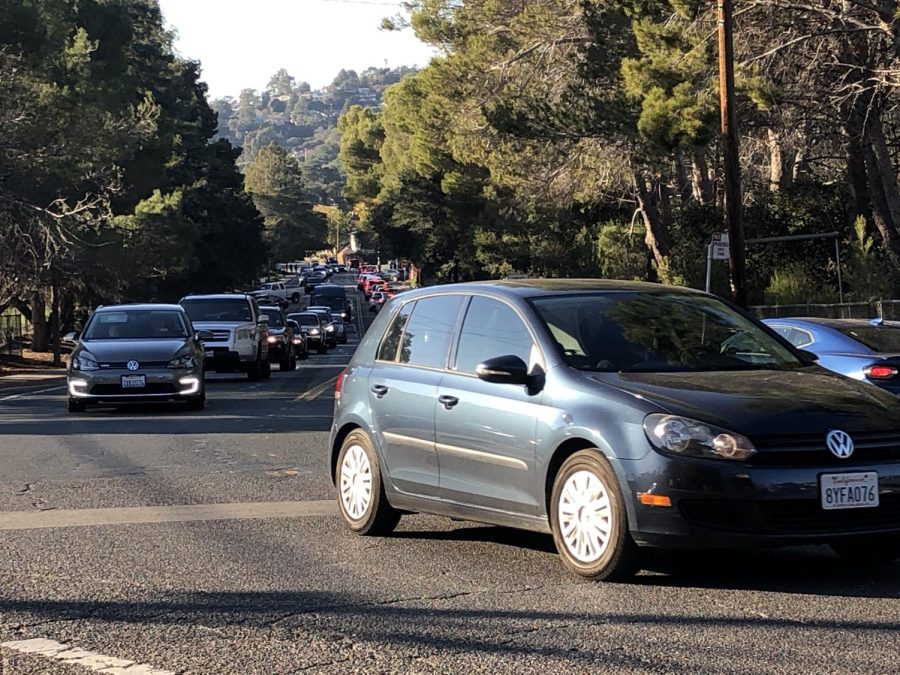Reckless teenage driving caused a car crash that killed the parents of young twin daughters, according to a statement by San Mateo County Coroner Robert Foucrault in an exclusive interview with Scot Scoop.
The collision involved two cars, one of them on fire when the police arrived, according to the Redwood City Police Department press release. It took place on Nov. 4 at about 8 p.m. on El Camino Real and Finger Avenue in Redwood City.
In one car, the 17-year-old driver and two passengers were taken to the hospital with non-fatal injuries. The driver and front passenger of the other car, Gregory Ammen and Grace Spiridon, were confirmed to be deceased, leaving their two young daughters without parents.
“You may think you’re having fun, listening to music, distracted while driving, drinking and driving, looking at your phone as you’re driving, not paying attention,” said Al Elzey, a captain with East Bay Regional Parks Police Department. “Those actions can be devastating because you can take out an entire family. You can take out parents and leave kids orphaned.”
While the crash rate in the Bay Area has gone down in recent decades due to seatbelts, airbags, and better traffic management, Foucrault estimates that about 10% to 15% of deaths he investigates were caused by motor vehicle collisions.
“The airbags are meant to reduce the number of fatalities; they’re not there to 100% prevent death,” said Foucrault. “You can have a traffic fatality, side impacts like a broadside or a T-bone traffic accident, and from the whiplash, it could snap somebody’s neck, or somebody could tear their aorta.”
Foucrault’s job as a coroner is to determine the mode, manner, and cause of death. In his experience, it’s hard to determine the cause of death from car accidents because there is not usually one injury that kills them; it’s the result of multiple traumatic injuries.
“I’ve seen accidents. I’ve chased a car before, where the car went into a house. I’ve chased another car where they went around the corner, and I’m behind them, and they broadsided a car that was crossing the intersection,” Elzey said, as a police officer with 29 years of law enforcement experience. “For me to witness the explosion and car parts flying everywhere, I mean, it’s pretty graphic.”
According to the Centers for Disease Control and Prevention, inexperience, driving with teenage passengers, driving at night, distractions, drowsiness, recklessness, and impaired driving are the leading causes of teen car accidents. In Elzey’s experience, teen drivers get cited the most for being on their phones, talking with their friends, and speeding, and there can be terrible consequences to that kind of reckless behavior.
The National Highway Traffic Safety Administration found that while young drivers account for 5.1% of all licensed drivers, they account for 8.5% of drivers involved in fatal crashes.
“Of course, I was always like, ‘Oh, what if something happens, like what if I get into an accident? What if I cause an accident?’ But I feel like I’ve progressed at a slow enough pace that I usually felt comfortable with what I was doing,” said Carlmont junior Adele Enthoven.
Defensive driving, anticipating dangerous situations before they happen, is taught by many driver education facilities, like All Seasons Driving in San Mateo, to ensure that their students will be responsible drivers once they get their licenses. According to the California Department of Motor Vehicles, defensive drivers are always looking ahead and are continuously aware of traffic surrounding their vehicles.
“All teenagers need to learn how to be defensive drivers. Usually, you want to be an offensive driver, and kids want to go fast and drive recklessly, but if you’re a good defensive driver, you’re looking at people driving around you, and pedestrians because they’re the ones that are going to cause you to get into an accident,” Elzey said.
In Enthoven’s experience, driver education emphasized the illegality of driving under the influence. Despite this emphasis, there was a 5% increase in juvenile arrests for driving under the influence from 2019 to 2020, according to the Office of Juvenile Justice with Delinquency Programs. Additionally, 24% of teen drivers killed in fatal vehicle collisions had been drinking, according to the CDC.
“For me, I feel mostly the same drunk as when I’m sober. Driving like that, my reaction time felt a bit slower, but I didn’t feel super impaired,” said an unnamed Carlmont senior*. “But unsafe teenage driving causes hazards around schools. It causes accidents – you can cause accidents, and then people die.”
According to the CDC, motor vehicle crashes happen more among teens aged 16 to 19 than in any other age group. Per mile driven, teen drivers are nearly three times more likely to be in a fatal crash.
“Young lives are just destroyed. You’re in school, you have dreams of going to college. One little mistake can ruin all of that,” Elzey said.
*This source remains anonymous to protect them from social and legal consequences in accordance with Carlmont Media’s anonymous sourcing policy.













